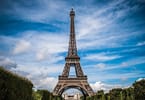(eTN) – Asia is the definitive winner of the contest organized by the New7Wonders of Nature. Provisional results were announced on November 11 in Zurich. There were 28 finalists, including 10 from Asia and the Pacific area. From the 7 most popular destinations selected by hundreds of millions of people around the globe voting on social media, the Internet, and by SMS, Asia finally got 4 winners: Jeju Island in South Korea, Puerto Princesa Underground River in the Philippines, Komodo Island in Indonesia, and Halong Bay in Vietnam.
The announcement of the New7Wonders for Halong Bay is another consecration for one of Vietnam’s most iconic landscapes. With thousands of limestone islets rising on the horizon of the Gulf of Tonkin, Halong Bay remains one of Indochina’s most enchanting landscapes. Its serene beauty is legendary. Some 500 years ago, Vietnamese poet, Nguyen Trai, already praised Hạlong Bay as a “rock wonder in the sky.”
Listed as a national landscape by the Vietnam Ministry of Culture in 1962, Halong Bay became a UNESCO World Heritage Site in 1994. Strong backing from the Vietnamese government, who enjoined Vietnamese to vote for Halong Bay on the web, also helped to make the famed site into the finalists.
“The official national and provincial authorities are committed to enabling the people of Vietnam to vote in the New7Wonders of Nature campaign, including via a nationwide SMS service,” the Vietnamese government explained during a visit of the New7Wonders President and Director to Halong last September.
Since its inception into the UNESCO World Heritage List, Halong Bay has been increasingly a popular place for travelers from all across the world. Despite its popularity with hundreds of thousands of travelers visiting the area each year, the magic still remains.
The Ministry of Tourism and Vietnam government continues to vow to protect Halong Bay’s natural environment by restricting fishing practices, monitoring littering in the area, and by imposing stricter construction rules along the Bay. However, various sources of pollution, such as industrial and urban development, coal mining, and tourism have already taken their toll on the bay environment. The construction of jetties for small boats and day trips of low quality have seen increasingly fuel, oil, and tourist litter impacting landscapes and the bay’s aquatic and terrestrial ecosystem. It is not certain if the new title for Halong Bay will, in fact, help to more effectively protect its beautiful landscapes, as more tourists can now be expected.
WHAT TO TAKE AWAY FROM THIS ARTICLE:
- “The official national and provincial authorities are committed to enabling the people of Vietnam to vote in the New7Wonders of Nature campaign, including via a nationwide SMS service,” the Vietnamese government explained during a visit of the New7Wonders President and Director to Halong last September.
- The Ministry of Tourism and Vietnam government continues to vow to protect Halong Bay's natural environment by restricting fishing practices, monitoring littering in the area, and by imposing stricter construction rules along the Bay.
- Listed as a national landscape by the Vietnam Ministry of Culture in 1962, Halong Bay became a UNESCO World Heritage Site in 1994.






















